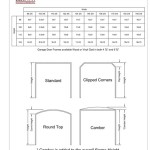How To Reprogram A Chamberlain Garage Door Remote
Chamberlain garage door openers are widely used due to their reliability and advanced features. However, like any electronic device, they may require reprogramming from time to time. This might be necessary due to a lost or stolen remote, interference with the signal, a change in the garage door opener's settings, or simply a need to update the remote's programming after replacing its batteries. Reprogramming a Chamberlain garage door remote is a straightforward process that can be completed by the homeowner with minimal tools and technical expertise. This article provides a detailed guide on how to reprogram a Chamberlain garage door remote, ensuring proper functionality and security.
Before initiating the reprogramming process, it's crucial to identify the model of your Chamberlain garage door opener and remote. This information can typically be found on the opener's housing and the back of the remote. Different models may have slightly different programming procedures. Having the correct model number will allow you to consult the Chamberlain user manual, which provides specific instructions tailored to your device. Furthermore, verifying that the remote's batteries are functioning correctly is essential. Weak or dead batteries can hinder the programming process and lead to unsuccessful attempts.
Understanding the Learning Process
Reprogramming a Chamberlain garage door remote involves initiating a "learning" process on the garage door opener motor unit. This process allows the opener to recognize and store the unique signal transmitted by the remote. The opener essentially learns the remote's identification code, enabling it to respond to the remote's commands to open and close the garage door. This learning process is typically initiated by pressing a "Learn" button located on the garage door opener motor unit. The location and appearance of this button may vary depending on the model.
The "Learn" button is often located on the back or side of the motor unit, usually near where the antenna wire is connected. It is typically a small, square button, often brightly colored (e.g., yellow, red, or purple). Once the "Learn" button is pressed, the opener enters a programming mode, indicated by a flashing LED light. This flashing light signals that the opener is ready to receive the signal from the remote. During this timeframe, which is usually about 30 seconds, pressing the button on the remote will transmit its unique code to the opener, allowing the opener to learn the remote's signal.
The timing is critical in this process. If the remote button is not pressed within the allotted time frame after pressing the "Learn" button, the opener will exit the programming mode and the process will need to be restarted. It's also important to note that some Chamberlain garage door openers require pressing and holding the remote button for a few seconds during the learning process. The specific instructions for your model can be found in the user manual.
Step-by-Step Reprogramming Instructions
The following steps outline the general procedure for reprogramming a Chamberlain garage door remote. However, it is important to consult the user manual for your specific model for any variations or model-specific instructions.
Step 1: Locate the "Learn" button on the garage door opener motor unit. As mentioned earlier, this button is typically found on the back or side of the unit, near the antenna wire. The color and shape of the button may vary depending on the model.
Step 2: Press and release the "Learn" button. Once pressed, an LED indicator light near the button should begin to flash, indicating that the opener is in learning mode. Be aware that some models may require you to hold the learn button down until the LED light illuminates instead of flashing.
Step 3: Within 30 seconds of pressing the "Learn" button, press and hold the button on the remote that you wish to program. Some models require only a brief press of the remote button, while others require holding it down for a few seconds. Refer to your user manual for the correct procedure.
Step 4: Observe the garage door opener. After the remote button is pressed, the garage door opener should either audibly click or the garage door opener light may flash. This indicates that the opener has successfully learned the remote's signal.
Step 5: Test the remote. After the opener indicates that it has learned the remote's signal, release the remote button and test the remote by pressing it again. The garage door should open or close in response to the remote's command. If the door does not respond, repeat steps 2-4, ensuring that the remote button is pressed within the allotted time frame and held for the correct duration.
Step 6: If you have multiple remotes to program, repeat steps 2-5 for each remote. The garage door opener can typically store the codes for multiple remotes, allowing each remote to control the door. It's important to program all remotes you intend to use before exiting learning mode. Once the Learn button has been pressed again, it will initiate a new learning sequence and previous remotes may have to be reprogrammed again.
Step 7: If the garage door opener does not respond to the remote after multiple attempts, troubleshooting may be required. Ensure that the batteries in the remote are fresh and properly installed. Also, check for any obstructions between the remote and the garage door opener that may be interfering with the signal. If problems persist, consult the Chamberlain user manual or contact Chamberlain customer support for assistance. Some issues may require a professional technician to diagnose and resolve.
Troubleshooting Common Issues
Several issues can arise during the reprogramming process that may prevent the remote from working correctly. Addressing these issues systematically can help ensure a successful outcome.
Battery Issues: The most common cause of reprogramming failures is weak or dead batteries in the remote. Even if the remote appears to be functioning, weak batteries may not provide a strong enough signal for the garage door opener to recognize. Replacing the batteries with fresh ones is always the first step in troubleshooting.
Signal Interference: Radio frequency interference from other devices can disrupt the signal between the remote and the garage door opener. This can be caused by nearby electronic devices such as cordless phones, Wi-Fi routers, or other garage door openers. Try moving the remote closer to the garage door opener during the programming process to minimize potential interference. Also, turning off any nearby electronic devices temporarily can help identify if interference is the cause of the problem.
Incorrect Programming Procedure: Following the correct programming procedure as outlined in the user manual is crucial. Different Chamberlain models may have slightly different programming steps. Double-checking the user manual for your specific model and carefully following the instructions will help prevent errors. Ensure the button is pressed for the amount of time outlined in the manual, as well as the learn button, too.
Garage Door Opener Memory Full: Garage door openers have a limited memory capacity for storing remote codes. If the opener's memory is full, it may not be able to learn new remote codes. In this case, you may need to erase the existing codes from the opener's memory before programming new remotes. This can typically be done by pressing and holding the "Learn" button for an extended period (e.g., 10-15 seconds) until the LED indicator light turns off. Refer to the user manual for specific instructions on clearing the opener's memory.
Remote Compatibility: Ensure that the remote you are trying to program is compatible with your Chamberlain garage door opener. Not all remotes are universally compatible with all garage door openers. The user manual or the Chamberlain website can provide information on compatible remotes for your specific model. If you have an older garage door opener, it may require a specific type of remote that is no longer readily available. In this case, you may need to consider upgrading your garage door opener to a newer model.
Damaged Remote or Opener: In some cases, the remote or the garage door opener may be damaged, preventing successful programming. If the remote has been dropped or exposed to water, it may have internal damage that affects its ability to transmit a signal. Similarly, if the garage door opener's circuit board is damaged, it may not be able to learn new remote codes. If you suspect damage to either the remote or the opener, consult a qualified technician for repairs or replacement.
By carefully following these steps and troubleshooting common issues, it is generally possible to successfully reprogram a Chamberlain garage door remote. However, if you encounter persistent problems, seeking professional assistance from a qualified technician or contacting Chamberlain customer support is advisable. They can provide further guidance and diagnose any underlying issues that may be preventing successful programming.

How To Program Chamberlain S 950estd And 953estd Remote Controls A Garage Door Opener

How To Program A Remote For Chamberlain Liftmaster Craftsman Garage Door Opener Setup Process

Programming A Chamberlain Garage Door Opener Easy Steps

How To Program Chamberlain Universal Mini Remote Control

How To Program A Universal Garage Door Opener Remote
How To Place A Garage Door Opener Into Program Mode For Myq Setup

Programming A Chamberlain Garage Door Opener Easy Steps

How To Program Chamberlain S 953ev And 956ev Remote Controls A Garage Door Opener

How To Program A Chamberlain Er Universal Remote Control Liftmaster 375

How To Program A Garage Door Remote Change Battery Liftmaster Chamberlain
Related Posts








